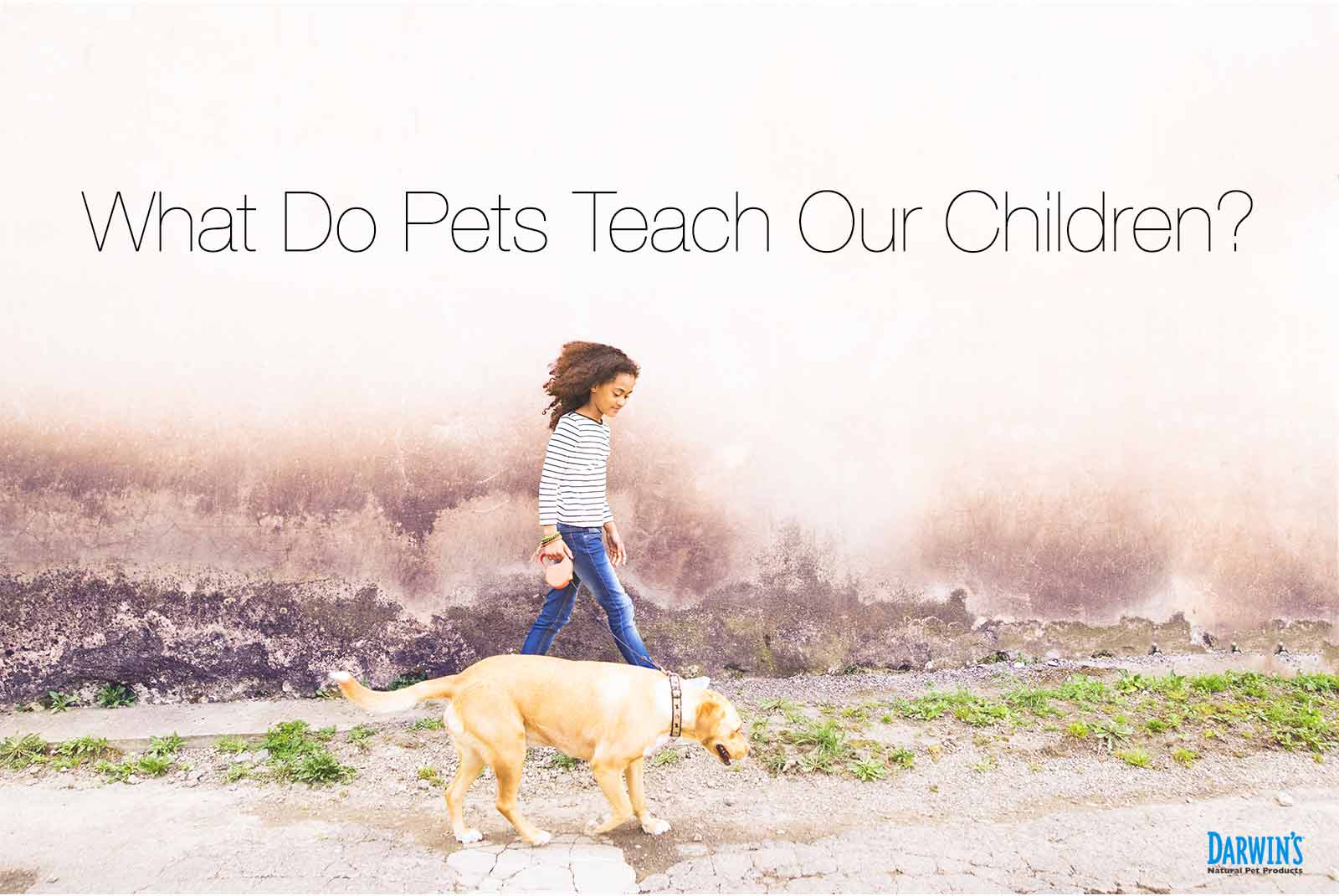What Do Pets Teach Our Children?
5/26/15

For children, family pets also offer the opportunity to learn life skills.
We’re never too old to learn from our pets. The family dog provides daily lessons in devotion, along with examples of how to be present and grateful. Everyone who loves a dog knows the joy of their companionship, along with the weight of responsibility. And every parent who strives to raise responsible humans can look to their family pet for relevant and age-appropriate teaching parables.
There’s unconditional friendship:
Homecoming, with your best four-footed friend on the other side of the door, is like winning the lottery every time you return home. A faithful dog doesn’t care if you’re not sporting the latest fashion trend or if you failed the math test. They’re not going to bully or mock, but will instead bowl you over with exuberant joy at being reunited. Through their acceptance, pets teach children to accept themselves.
As far as we know, a Dachshund has never been concerned with having shorter legs than a Great Dane, a Basset Hound never concerned with having wider hips than a Whippet. Feeling different when growing up can be tough. Children learn from their furry companions to love themselves. That acceptance is something every little person needs to experience, to grow into an adult, capable of respecting the uniqueness of others.
Pets teach responsibility:
Remember begging mom and dad for a furry friend and promising you would do all the work, if only they’d let you bring the puppy home? The first couple days were idyllic, but before long some of the joy was diminished by puddles and chores. Children learn patience concurrently with the responsibilities of pet care. It takes time and a ton of patience to potty train a puppy. Some pets may be slower to learn than others, and potty training isn’t something to be taught overnight. Having children assist in this training shows young people the benefits of patient persistence.
Training a pet to sit or fetch requires consistency, dedication and tenacity:
Along with reinforcing the structure of skill acquisition, each task mastered allows children to experience the thrill of accomplishment – something that is reinforced with every repetition of Fido’s new trick.
Seeing pets at work in our communities teaches children the value of partnering with others:
Police, Search and Rescue and Personal Service dogs provide everyday examples of not just headline heroism, but also daily kindness. Children see and absorb the small acts that bond animals to us, whether its helping a sight-impaired neighbor cross the street, calming the anxiety of a grandparent with Alzheimer’s, or enabling a returning soldier to deal with PTSD.
Different styles of communication are something we learn from watching the other animals who share our world:
Dogs are constantly communicating with us and with each other. They teach important non-verbal cues and the need for observing our surroundings. A wagging tail and open mouth indicates a friendly invitation, while raised hackles and a stiff body often signals a warning to stay away. (Interestingly, cats meow only to communicate with humans, but not with each other!)
All pets can help children to express a full spectrum of emotions, and to understand them as well:
Children apply human characteristics to animals—they wonder how animals are feeling, what they are thinking. Through their love of the family pet, children learn to show concern for others. Pets stimulate a natural inclination to empathize which forms the basis for later human relationships.
Providing parents with the opportunity to teach healthy ways to grieve:
The loss of a pet is often a child’s first experience with death. Whether suddenly or from a painful journey, gone is their confidant, their protector and their best friend. Through these hard experiences children learn the fragility and value of life; its ups and downs, providing parents with the opportunity to teach healthy ways to grieve. Sharing happy memories keeps love alive. Accepting another pet into their life teaches children it’s possible to love again. See this post for more information on handling the loss of a pet.
Possibly the most important thing pets teach children is to have fun:
There’s nothing like seeing your dog at the park, or with their pack feeling frisky and free. For us humans, it’s easy to get caught up in the daily grind and the stresses life throws in our path. Children feel those pressures, too! School and chores are important—but so is having fun.



